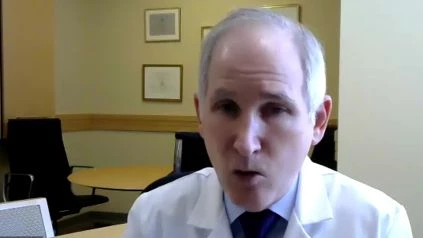Charles S. Fuchs, MD, MPH at Yale Cancer discusses how Checkpoint Inhibitors are a “real player” in Gastric Cancers.
Bottom line:
KEYNOTE-061 (NCT02370498) is a Phase 3 global analysis of pembrolizumab vs. paclitaxel as second line therapy for GC. At the time of primary analysis (data cutoff: Oct 26, 2017), pembrolizumab did not substantially extend overall survival ( OS) versus paclitaxel (9.1 months versus 8.3 months) in patients with PD-L1-positive status (combined positive score [CPS] [1]), but resulted in a longer response period (DOR) and a favorable safety profile versus paclitaxel. After 2 additional years of follow-up (cut-off: Oct 7, 2019), we present KEYNOTE-061 findings in patients with CPS range 1, range 5 and range 10 (cut-off: Oct 7, 2019).
Approaches:
Adult GC patients who improved after platinum + fluoropyrimidine chemotherapy were randomly allocated 1:1 to 200 mg Q3W pembrolizumab for up to 35 cycles (~2 y) or normal paclitaxel dosages. The primary endpoints were OS and progression-free survival (PFS) in the CPS1 population. We rendered comparisons using stratified log-rank tests.
Analyzes:
366/395 patients with CPS1 had died at the time of this study (92.6 percent). In PD-L1–positive patients (Table) Pembrolizumab prolonged OS vs paclitaxel. In PFS (Table) there were no major differences between classes. The objective response rate (ORR) for pembrolizumab was higher in the CPS community and the pembrolizumab DOR was longer using all CPS cutoffs (Table). In the general population there were less drug-related adverse effects (AEs) with pembrolizumab than paclitaxel (53% vs 84%).
Conclusions Therein:
This long-term study showed that second-line pembrolizumab prolonged OS among PD-L1–positive GC patients and resulted in less drug-related AEs vs. paclitaxel. Details on clinical trials: NCT02370498.

